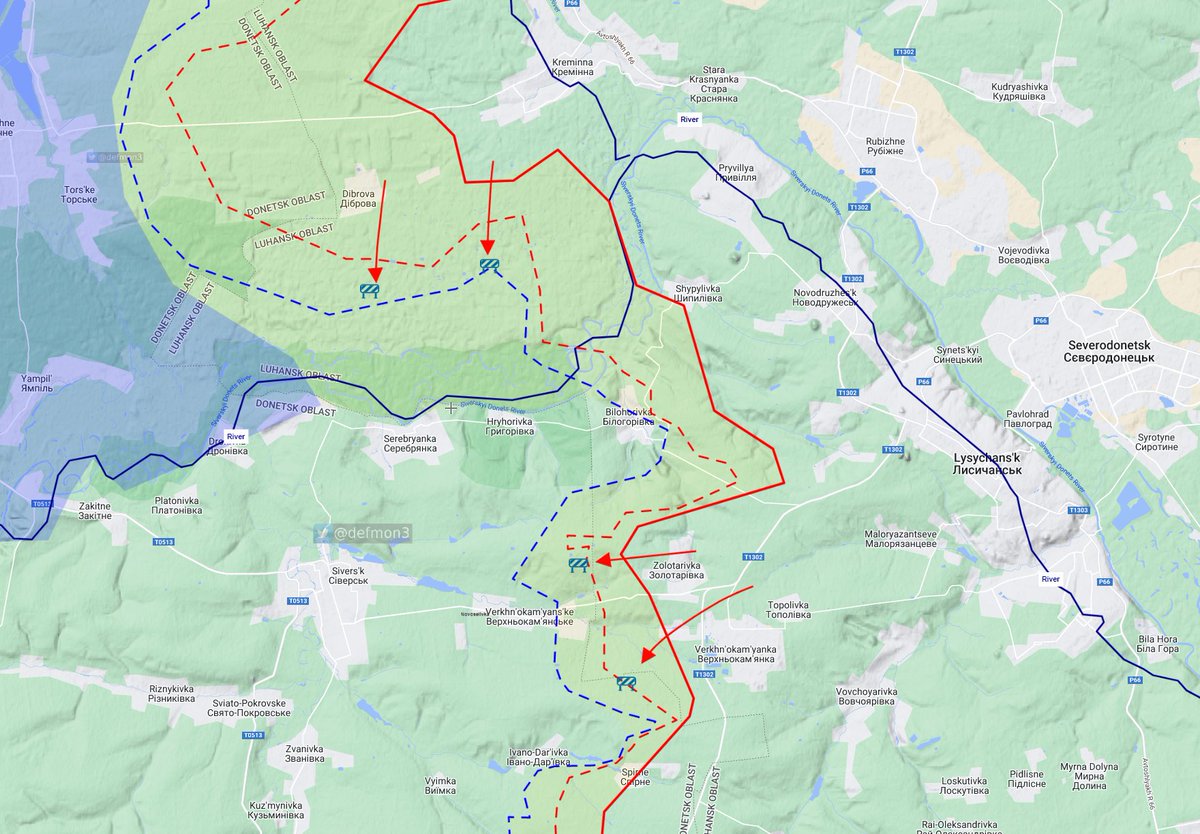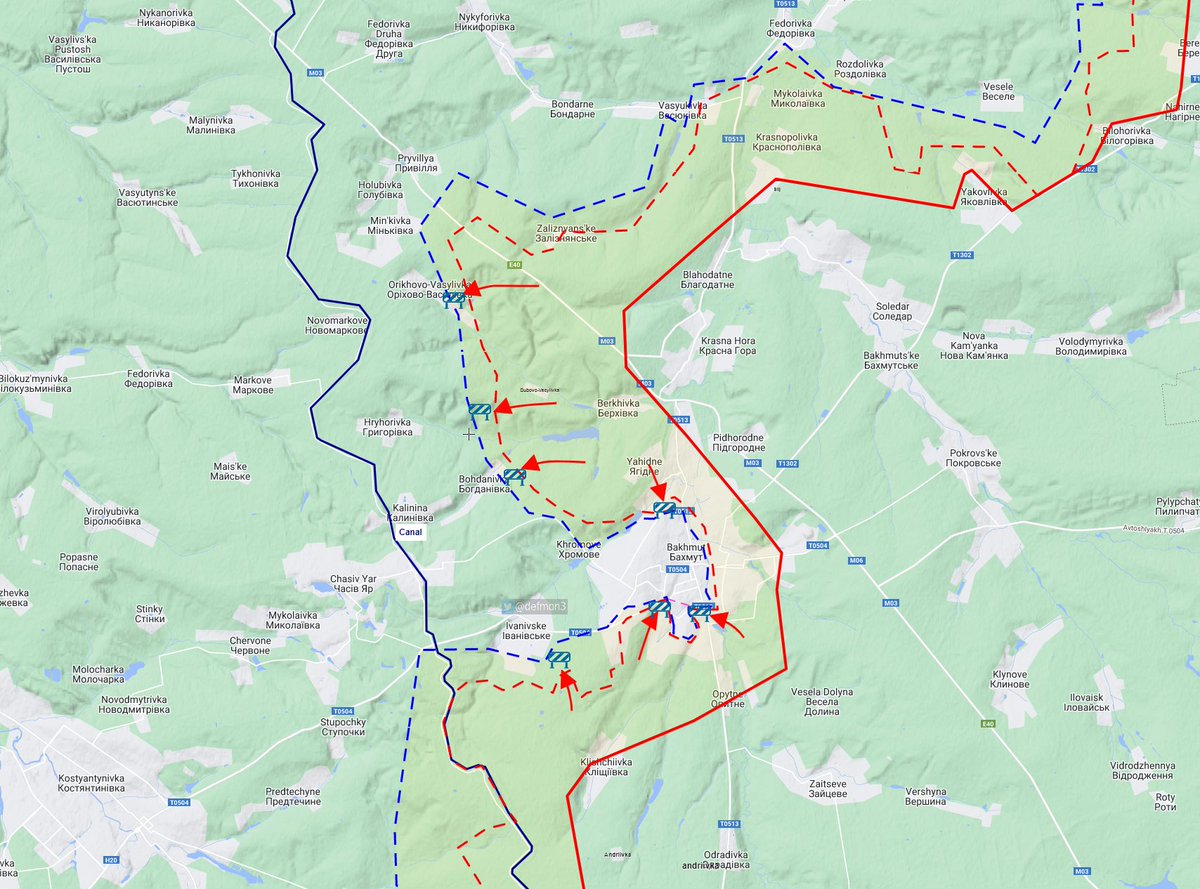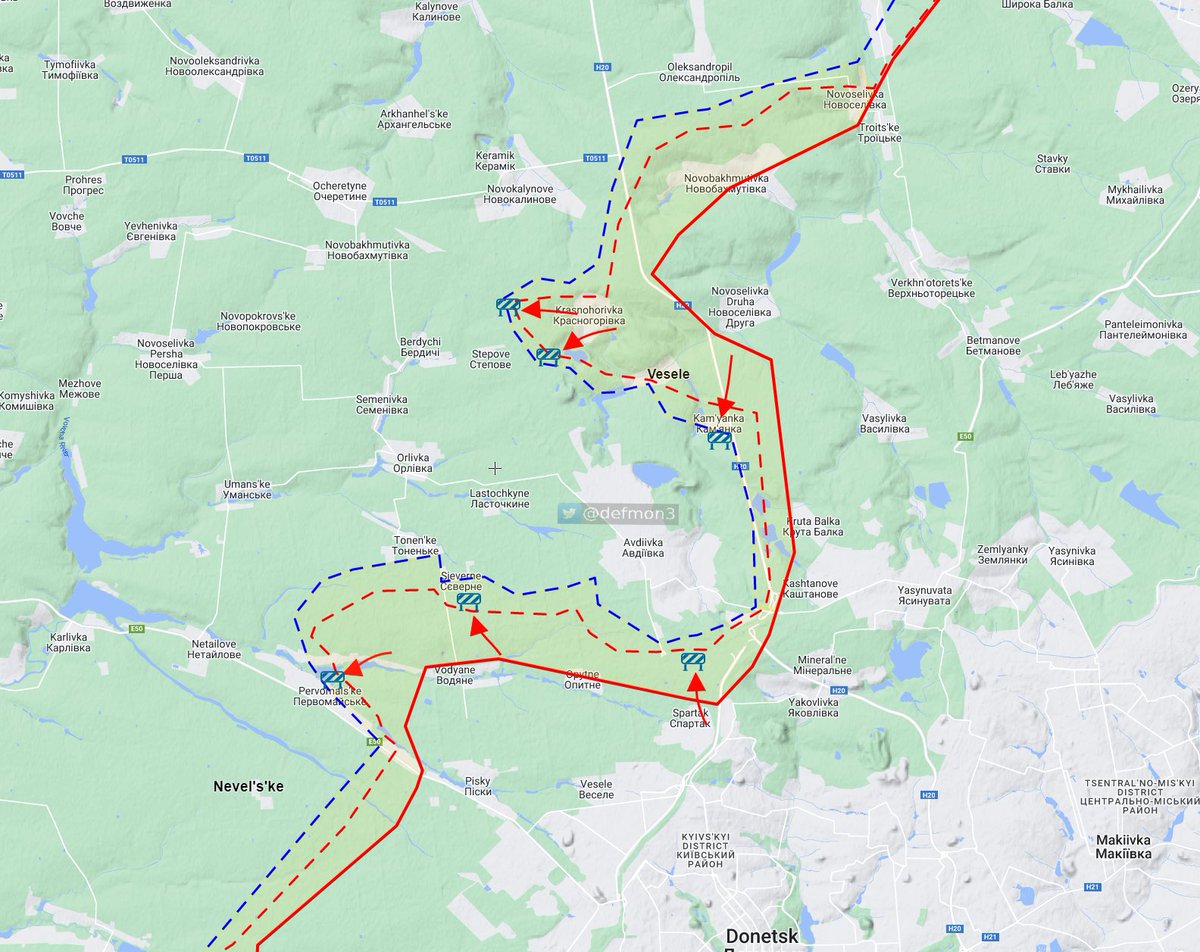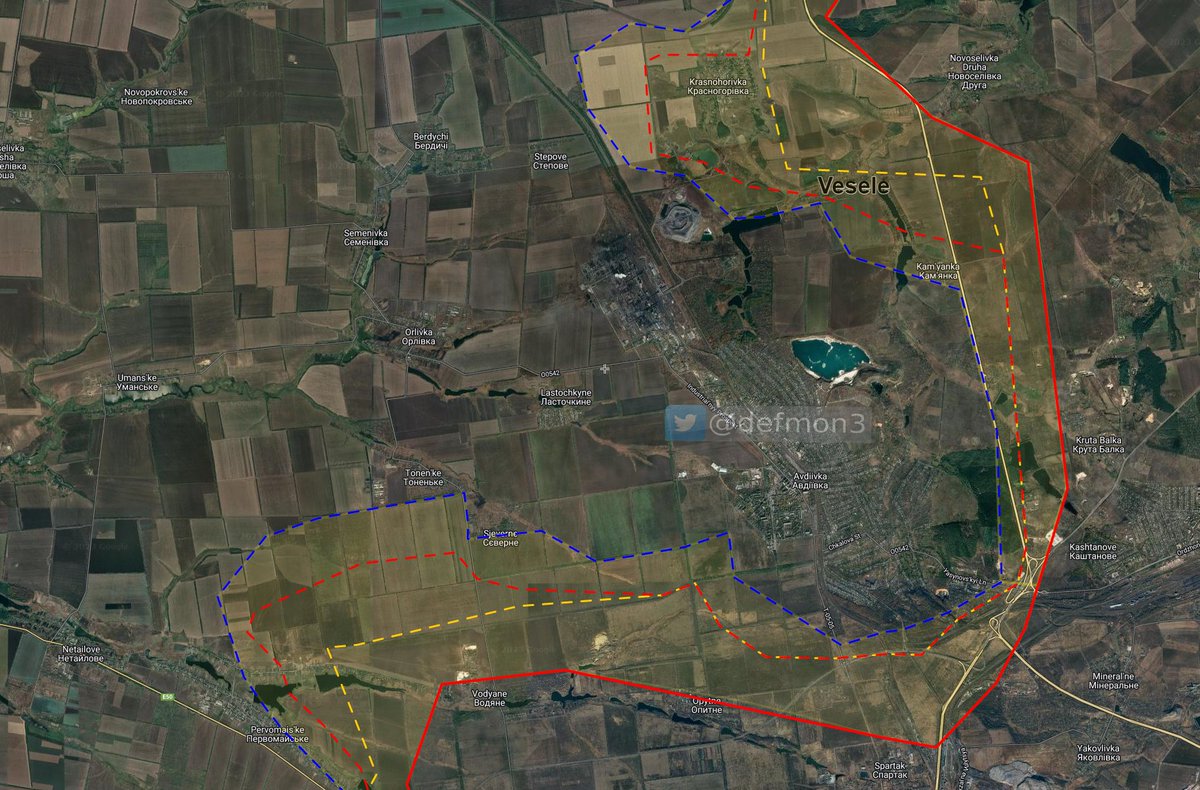Visit interactive map for more details and explanations. (Legend available)
scribblemaps.com/maps/view/Oper…
scribblemaps.com/maps/view/Oper…
Previous thread:
https://twitter.com/DefMon3/status/1636796681428807680
The AFU repulsed attacks in the area of Novoselivs’ke, Kreminna, Dibrova, Verkhn’okam’yans’ke, and Spirne. Not a lot of movement in this direction at this point. 



Bakhmut
The AFU repulsed attacks in the area of Bakhmut, Orikhovo-Vasylivka, Hryhorivka, and Bohdanivka, Ivanivske.
The AFU repulsed attacks in the area of Bakhmut, Orikhovo-Vasylivka, Hryhorivka, and Bohdanivka, Ivanivske.

This impressive geolocation shows UA forces firing at RU forces.
It gives an indication of RU advances in southern Bakhmut from the airplane area towards the center. (images in next tweet)
It gives an indication of RU advances in southern Bakhmut from the airplane area towards the center. (images in next tweet)
https://twitter.com/Goochslap/status/1637201629853241350
Bakhmut
Pic 1: The two blue arrows indicate direction of shooting and red circles indicate the target.
Pic 2: Yellow line is the estimated RU progress on March 10th

Pic 1: The two blue arrows indicate direction of shooting and red circles indicate the target.
Pic 2: Yellow line is the estimated RU progress on March 10th


Bakhmut
This image shows the difference in the RU forward lines (dashed) between Orange: March 10th and Red: March 19th.
This image shows the difference in the RU forward lines (dashed) between Orange: March 10th and Red: March 19th.

Avdiivka - Donetsk
The AFU repulsed attacks in the area Krasnohorivka, Kam’yanka, Avdiivka, Vodyane, Sjeverne, Berdychi, Pervomais’ke, and Mar’inka

The AFU repulsed attacks in the area Krasnohorivka, Kam’yanka, Avdiivka, Vodyane, Sjeverne, Berdychi, Pervomais’ke, and Mar’inka


Avdiivka
This image shows the difference in the RU forward lines (dashed) between Orange: March 10th and Red: March 19th.
This image shows the difference in the RU forward lines (dashed) between Orange: March 10th and Red: March 19th.

RuAF are slowly advancing in both Bakhmut and Avdiivka. There has been a few reports about RuAF not having any reserves behind the lines, but I'm not sure I believe them.
RuAF have been on the offensive for more than 1.5 month now and offensive operations like that does wear on both equipment, personnel and local ammunition stocks. I do not see them continuing this pace of attacks for more than another month or so. Many unknown variables.
Ukraine spend the summer training and building offensive potential in their units while defending all along the frontline with minimal resources, There were multiple reports from the frontlines about them not having enough resources
During that time Ukraine accumulated equipment and trained troops, while starting strike RU logistic targets with HIMARS. At the same time, RuAF decided to move almost all their VDV units, plus Eastern and Central Military district away from Kharkiv region.
Late summer, early fall, Ukraine managed to recaptured large parts of Kharkiv region as a result of attrition and low morale and a severe personnel shortage RuAF were unable to defend Kharkiv region.
Once that was done, AFU stepped up their effort to attack RuAF GLOC in the Kherson region, especially bridges and barges. While having some initial success surprising RU logistics, RuAF quickly adapted using barges from different launch locations.
During this time AFU attempted ground assaults in both the south and north part of Kherson region, with mixed results. Mostly unsuccessful. They did have some success in the northern part which proved to be the most difficult to supply for RuAF.
But even after a UA breakthrough of RU lines, RuAF managed to stop the AFU by sending reinforcements after just a few days.
At this point RuAF successfully restored GLOC over the NK dam with temporary bridges and I thin they could have stayed in Kherson the year out.
At this point RuAF successfully restored GLOC over the NK dam with temporary bridges and I thin they could have stayed in Kherson the year out.
I also think they realized they would not be able to do any kind of offensives west of the Dnipro and deemed it too costly to try to keep it. They could instead withdraw their units, reconstitute their combat potential and use them elsewhere.
At this point in time, I'm leaning towards RU made a rational decision to withdraw over time from Kherson (they did so quite successfully) to continue their offensive during the winter and possibly gain the upper hand. I think this was a wise and important decision by RU.
RuAF have during and after the withdrawal from Kherson successfully trained their mobiks for around 3 months. integrated them in to their regular units (and created new ones). They have moved a lot of the assault units from Kherson to Bakhmut and Kreminna.
RuAF managed to capture Yakovlivka in early December after committing more resources to the area (VDV). At this point RuAF gradually started introducing more and more of the personnel which was mobilized in October.
https://twitter.com/DefMon3/status/1604889545870229504
After Yakovlivka was captured RuAF had the upper hand, the AFU had exhausted a lot of their combat potential during the fall offensive.
RuAF have gradually stepped up their efforts to attack Bakhmut since the fall Yakovlivka, and after the fall of Soledar they really stepped it up in late January.
What I believe we are seeing right now is kind of what we saw during the summer. UA are trying to reconstitute offensive potential while defending with "minimal" resources. That being said, those minimal resources are much greater now than during the summer.
I have expressed disagreement with the defense of Bakhmut. This is not because I think UA are doing the wrong thing over all, but rather I think they need to sacrifice more land for time and RU bodies rather than sacrificing UA soldiers.
I think we will see another month or so with RuAF having the upper hand. Possibly a bit slower May. But some time during June, I think we might see the AFU starting to operate more offensively.
Some time during the summer is also when most experts believe RuAF will start running in to some real issues with ammunition.
• • •
Missing some Tweet in this thread? You can try to
force a refresh
























